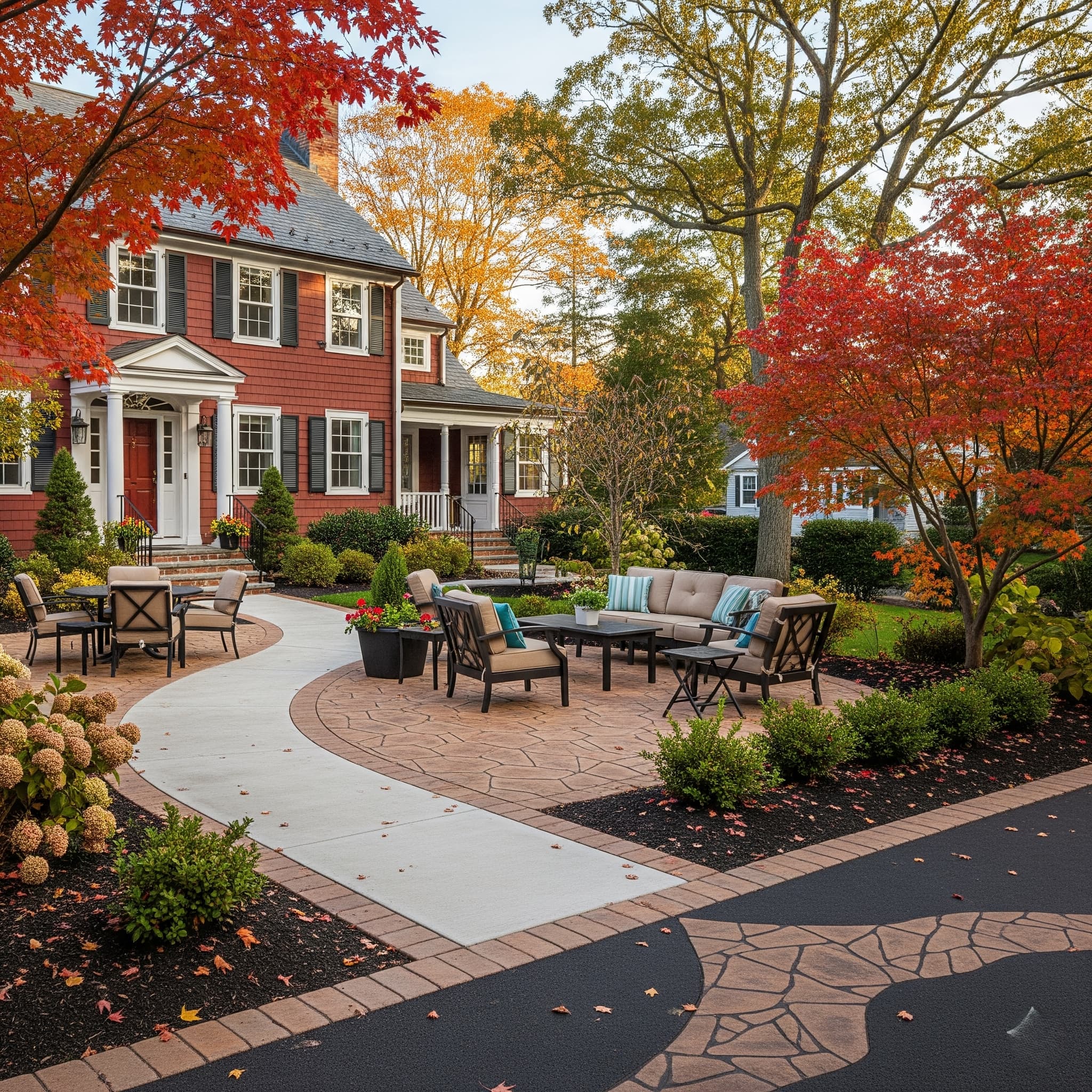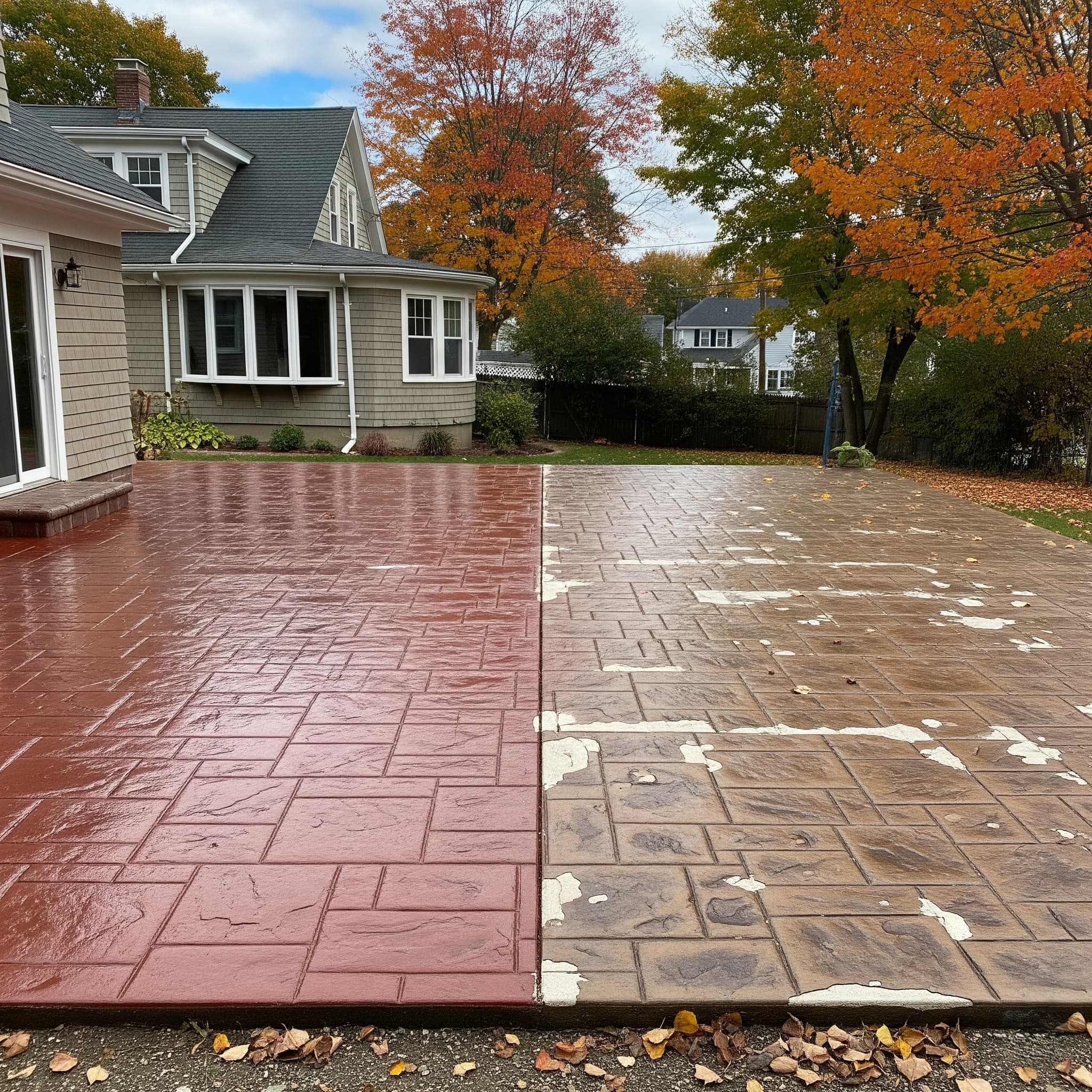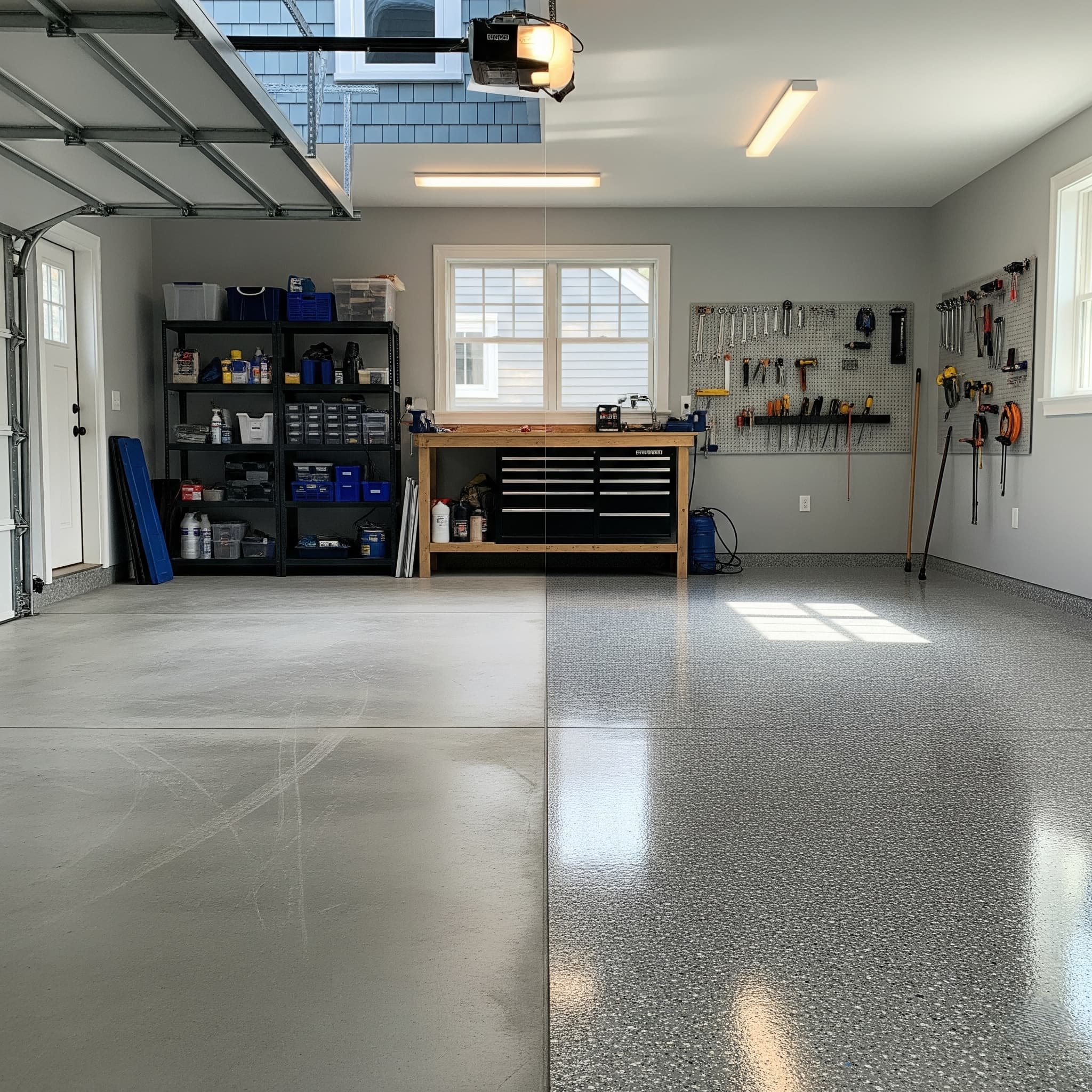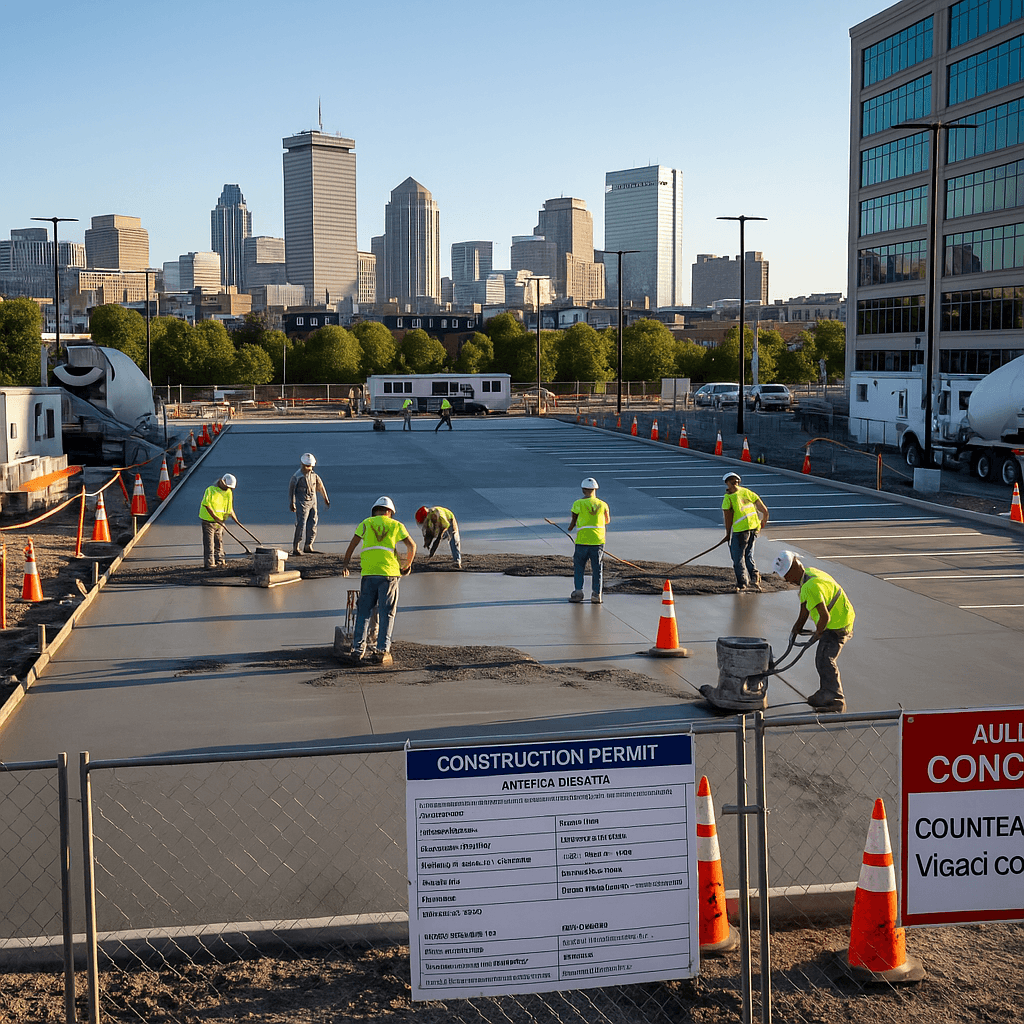
Cost Analysis: Stamped Concrete Patios in Boston Suburbs
Stamped Concrete Patio
Planning a stamped concrete patio in your Boston area home means figuring out all those cost elements that add up to your final spend. Homeowners around here keep going for these fancy concrete options more often now. They hold up well, look nice, and give better value down the line than the usual patio stuff you see. Putting money into a solid stamped concrete setup at the start really pays off later. You get lower upkeep bills and your property value goes up over many years of having it there. Boston’s weather hits hard with all the freezing and thawing. So the material has to take that without losing its look or getting weak. Getting a full picture of the prices helps you decide right on fixing up that outdoor spot.
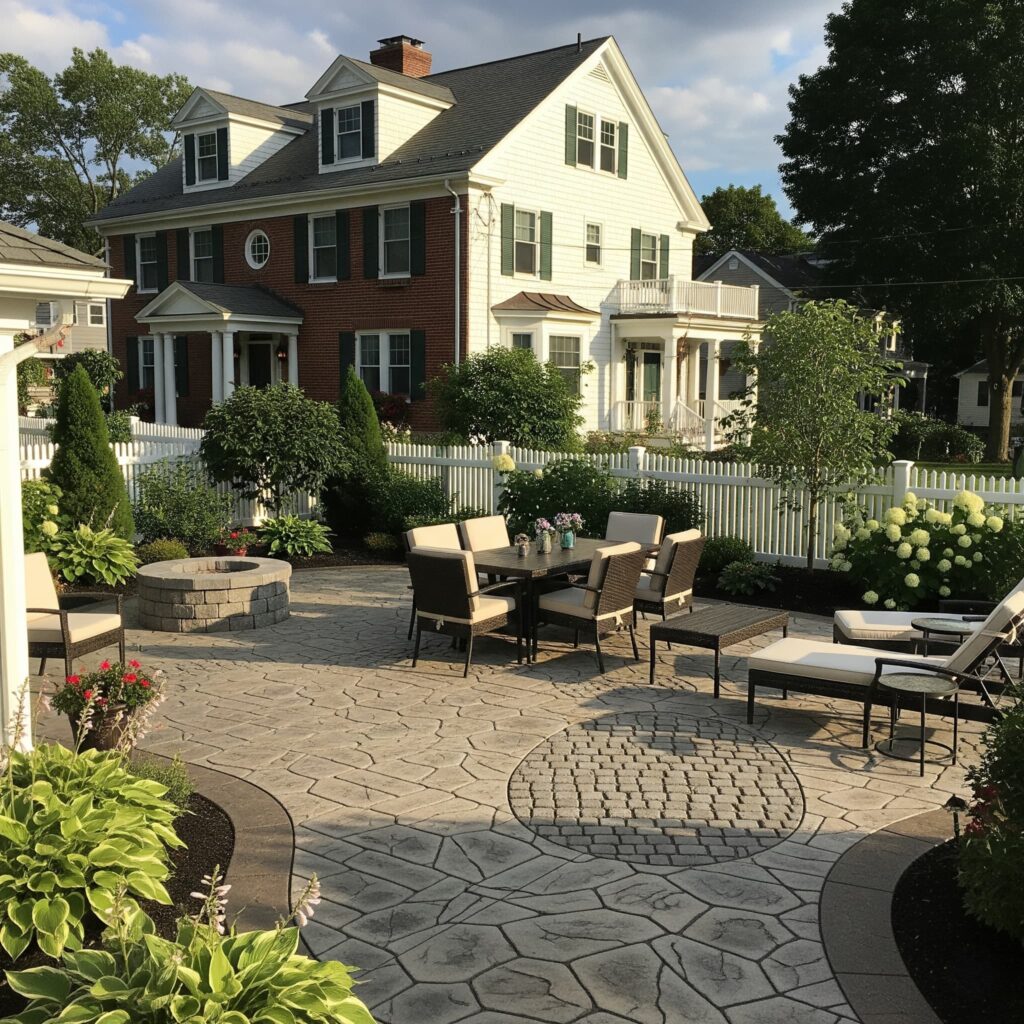
Base Cost Factors and Material Pricing
Stamped concrete patio installations in Boston suburbs typically range from $12 to $25 per square foot, depending on design complexity and material specifications. Basic single-color installations with simple patterns represent the lower end of this range, while elaborate multi-colored designs with intricate textures command premium pricing.
Concrete material costs go up and down around the Boston area. It depends on what local suppliers have on hand and how demand shifts with the seasons. Those high performance mixes built for New England weather come with air entrainment. They also have special additives. Sure, that bumps up the price. But it means better durability over time.
Labor costs change a lot depending on who you hire. Experienced specialists in decorative concrete charge more than general contractors doing stamped work. Skilled artisans get the timing right. They align patterns properly and apply colors just so. They ask for premium rates. Still, the results end up superior.
Pattern and Design Complexity
Simple patterns like ashlar slate or running bond, they cost less overall. You know, compared to those intricate designs. Things like European cobblestone or random stone textures. Complex patterns take more time to handle. Extra time for placing the stamps, matching up the patterns, and detailing the edges. That pushes labor costs up quite a bit.
Multiple pattern combos or custom designs, they add borders, medallions, or contrasting textures. That kind of thing can raise project costs by 30 to 50 percent. Pretty much compared to sticking with a single pattern across the whole patio surface.
Site Preparation and Excavation Costs
Thing is, excavation needs change based on the site’s current setup, how drainage works, and those local frost depth rules around Massachusetts. For stamped concrete patios, you usually dig out 6 to 8 inches of soil. That lets you add the right base materials and get the concrete thickness in place.
You run into rocky or clay soil a lot in spots like Newton or Wellesley. It ends up costing more for the extra digging, and you might need special equipment just to prep the site properly. Areas with bad drainage, well, they call for more base layers or even full drainage setups. Basically, that pushes the whole project expenses higher.
Existing landscape removal, tree root cutting, or utility line marking adds to preparation costs but ensures safe, successful installation. Professional contractors include these considerations in comprehensive estimates rather than surprising homeowners with additional charges.
Base Material and Reinforcement
Proper base preparation includes compacted gravel or stone dust layers that support a stable foundation essential for long-term performance. Quality-based materials cost $2-4 per square foot but prevent settling, cracking, and other issues that compromise patio integrity.
Wire mesh or fiber reinforcement systems add $1-2 per square foot to material costs but significantly improve crack resistance and structural performance. These additions prove especially valuable in Boston’s climate with significant temperature variations throughout the year.
Color and Finishing Options
Integral color systems run you about two to five bucks per square foot. That depends on how intense the color is and what kind of coverage you need. Earth tones and those neutral shades, they usually cost less. Vibrant colors or custom matches that need special pigments, well, those push the price up.
Color hardeners give you better durability and deeper colors, you know. But they bump up the material costs by three to six dollars per square foot. This kind of treatment works great for spots with a lot of foot traffic. Or patios that get hit hard by the weather.
Antiquing releases and accent colors make things look like real stone or brick. They take extra materials though. And you need skilled folks to apply them right. These add-ons can tack on two to four dollars per square foot to the whole project.
Sealer Applications and Protection
High quality concrete sealers do a good job protecting those stamped surfaces. They keep out moisture that could seep in. Plus they handle freeze thaw damage pretty well. And they stop colors from fading due to all that UV exposure from the sun. The premium kinds cost around one to three dollars per square foot. Still they make patios last way longer. And they hold onto that nice appearance for years on end.
Anti slip additives go right into the sealer when you apply it. They boost safety on wet spots without ruining the decorative look at all. These additions do not jack up the cost much. But they offer real liability protection for homeowners. You know slips happen.
Regional Cost Variations
Labor costs can change a lot across the Boston suburbs. It all depends on things like local demand, how many contractors are around, and just how complicated the project gets. Places like Brookline or Cambridge, they are more affluent spots. So you end up with higher labor rates there. Thats because living costs are up, and people expect top-notch service pretty much.
When it comes to material delivery, costs go up if the suburban spot is farther out from concrete plants or those main supply centers. Remote areas, they might hit you with extra fees. You know, for stuff like concrete pumping or special equipment to even get to the site.
Permits cost different amounts depending on the town or city around there. For a residential patio, it usually falls between 50 and 200 dollars. But some places add on more inspections or need engineering checks. That bumps up the admin fees and stretches out the whole timeline.
Seasonal Pricing Considerations
Demand picks up a lot in spring for installations. That pushes prices higher pretty much every time. Contractors get swamped, and homeowners are itching to wrap up those outdoor jobs before summer hits. Fall is different though. You can snag some savings there. Contractors hustle to fill their books before everything shuts down for winter.
Weather delays during concrete placement can increase project costs through additional mobilization charges or extended timeline requirements. Professional contractors factor these possibilities into pricing structures and project planning.
Size and Scale Economics
When you go for bigger stamped concrete patios, you get those economies of scale working in your favor. That means lower costs per square foot on stuff like materials, equipment, and even labor since things run more efficiently. Projects that hit over 500 square feet, they usually score better deals compared to the small ones.
Small patio jobs often come with minimum charges, you know. Its because of all the hassle with moving equipment around and setting up. Those minimums tend to sit between $2,500 to $4,000, no matter how little space youre actually covering.
If you combine things, like adding a driveway or walkways or even a couple patio spots, you can save a bunch on costs. Thats from sharing the mobilization efforts and buying materials in bulk. Overall, tackling a full outdoor concrete setup gives you way better value than doing it all in bits and pieces.
Design Integration and Landscaping
Coordinating stamped concrete installation with existing or planned landscaping can affect project timing and costs. Proper planning prevents damage to completed work and reduces overall project expenses through efficient scheduling.
Edge treatments, planters, or integrated seating elements increase design complexity and material costs but enhance overall patio functionality and aesthetic appeal. These features typically add $10-25 per linear foot, depending on design specifications.
Maintenance and Long-term Value
Annual maintenance costs for stamped concrete patios average $200-500, depending on patio size and local service availability. Regular cleaning and periodic sealer reapplication preserve appearance and protect the investment for decades.
Stamped concrete patios that get installed the right way usually hold up for 20 to 30 years. You barely need to do anything to maintain them. Other patio materials, they often call for repairs or even full replacements pretty often. Thing is, that kind of long life makes for a solid return on what homeowners put in.
Property value increases from quality outdoor living spaces often exceed installation costs, particularly in desirable Boston suburban markets where outdoor entertaining space commands premium valuations.
Energy Efficiency and Environmental Benefits
Light colored stamped concrete surfaces, they reflect a lot of heat. That helps cut down cooling costs, especially when you compare it to darker paving materials. Those energy savings really add up for the long term value of a project. They support environmental sustainability goals too.
Permeable stamped concrete options handle stormwater management needs. They keep that decorative look going. These systems cost more up front, you know. But they might get you municipal incentives. Or they could lower those stormwater fees.
Contractor Selection and Quality Assurance
Experienced decorative concrete contractors charge premium rates but deliver superior results that justify higher initial costs through improved durability and appearance. Contractor expertise significantly impacts long-term satisfaction and project value.
Warranties and quality guarantees can differ a lot from one contractor to the next. That variation hits right on the projects overall worth. You get some real comfort from ones that cover both the materials used and the actual work. Its smart to factor that in when choosing who to hire.
Good insurance and the right licenses keep homeowners clear of legal headaches. They make sure everything lines up with local building rules too. Sure, those qualifications might bump up the cost a bit. Still, they offer solid protection for major investments in your home.
Financing and Budget Planning
Home improvement financing helps out with those big stamped concrete jobs. It breaks things down into payments you can handle each month. Contractors often have their own programs set up. Or they point you to lenders they like if you qualify as a homeowner.
Timing matters a lot for seasons when it comes to prices and getting financing lined up. Spring and summer usually mean better deals on the money side for installs. If you plan for quieter times like fall or winter though, you might save some cash overall. And the financing could be easier to snag.
When youre budgeting, figure in some extra for surprises on site or changes to the design that pop up with patios. Most pros build in buffers for that stuff in their quotes. It keeps you from going over what you planned.
When planning your stamped concrete patio investment in Boston’s suburban communities, a comprehensive cost analysis ensures informed decision-making and successful project outcomes. Boston Concrete Works provides detailed estimates and transparent pricing for all decorative concrete installations, helping homeowners achieve their outdoor living goals while maximizing long-term value and enjoyment of their investment.
LATEST POSTS

